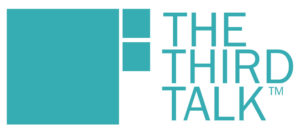
A Beginner’s Guide to Winning More Grants for Your Nonprofit
September 30, 2021
Nonprofit EIDL $2,000,000 Loans Now Available
October 3, 2021John Van Arnam’s The Third Talk Reveals How Porn Affects Children’s Health shines a light on an epidemic polite society isn’t willing to confront.
Parents will have the talk to teach their kids about the birds and the bees. A second talk happens in middle school, often given by a health teacher or guidance counselor to discuss anatomy, pregnancy, and sexually transmitted infections – and then that’s it.Then our young people are left alone to discover their sexuality and, unfortunately, all too often, they do that online.
Parents now need to have another talk: The Third Talk . Parents must discuss explicit adult material online and pornography prevention with their young people. Kids need to learn the social, physical, and psychological reasons why they should avoid pornography and parents must initiate those conversations before a child’s first exposure.
. Parents must discuss explicit adult material online and pornography prevention with their young people. Kids need to learn the social, physical, and psychological reasons why they should avoid pornography and parents must initiate those conversations before a child’s first exposure.
Adult content is now so normalized that some parents say “it’s just porn” without realizing the dramatic effect of this content on young people and their developing brains or how significantly and quickly viewing explicit material can affect their kids.
Our schools, churches, governments, technologies, and the porn industry are NOT going to solve this for us. We cannot expect our children to manage such exposure to adult content without our guidance. It’s up to grown-ups, and The Third Talk is here to help.
is here to help.
John Van Arnam’s The Third Talk Reveals How Porn Affects Children’s Health
Over 14.5 billion explicit adult videos are viewed by 7–17-year-olds in the United States every year. Our young people represent one of the largest pornography viewing demographics in the world.
Parents are unaware or in denial about their own young person’s exposure. We know that 93% of boys and 68% of girls see this content before they leave high school. Even if your child beats those odds, most of their peers will have viewed this content. Teen culture is saturated with pornography’s ideas and standards.
The conversation has been awkward for parents and therefore mostly ignored. This is not dad’s Playboy. Explicit online adult videos are dangerous for young people.
Challenges for Boys
A 2011 estimate of 14–17-year-old boys’ consumption of explicit adult videos in the United States was over 50 videos per week on average. Viewing such an extraordinary volume of explicit adult material at that early an age can have immediate and long-lasting effects on brain development. This can manifest in boys in shame, fear, and anxiety. In extreme doses, it can contribute to anger, aggression, depression, a lack of interest in other people, loneliness, objectification and assault.
Boys as young as 7 and 8 years old report viewing explicit adult material. In the United States, the average age of exposure to explicit videos is about age 11.
The real challenge for boys’ viewing this content regularly is that many believe it to be representative of real life. These boys see such graphic content as an actual guide on how to engage in sexual relations with others. The danger rises when we do not provide boys with an alternative message to the content they view and instead allow them to gain their sex education from explicit adult videos online. This can rob a boy of his individual interests and may increase the resentment, anger, frustration, or loneliness he could be experiencing as an adolescent.
Challenges for Girls
Girls may view this content with a natural curiosity to gain maturity. They can be negatively affected emotionally by comparing themselves unfavorably with porn stars or trying to live up to that image.
Girls may watch explicit adult videos to try to understand what a potential partner wants, but this only serves to trample over her own ideas about sexuality. Girls endure body shaming, slut shaming, prude shaming, and sex shaming as early as 11 years old and can be targeted on social media. The idea of “sexuality as currency” is unhealthy for our girls. Don’t take our word for it, just look at Only Fans.
Another challenge for girls is that aggressive “porn-sex”-soaked boys can see girls as sex objects. Moreover, girls can face an accelerated idea of what initial physical contact should or could be like for them. This can include sexual violence at the hands of a partner.
Challenges for Parents
The Third Talk is here to provide parents with information and language to initiate pornography prevention conversations with their young people. We provide practical real-world language to start that talk as well as the “how and why” to keep the conversation going through adolescence.
is here to provide parents with information and language to initiate pornography prevention conversations with their young people. We provide practical real-world language to start that talk as well as the “how and why” to keep the conversation going through adolescence.
All other methods of trying to curb this content’s availability to our young people (political, legislative, technical, religious, filters etc.) have proven ineffective for 20 years as the number simply continue to go up; doubling in 2020.
It is communication between parents and young people that will overcome this challenge. We take a direct and purposeful approach at The Third Talk . We do not shame, blame, or use colorful language. We talk about the world our kids live in, not the world we wished they live in. Grown ups created this environment and grown ups need to change it. Please help us change it.
. We do not shame, blame, or use colorful language. We talk about the world our kids live in, not the world we wished they live in. Grown ups created this environment and grown ups need to change it. Please help us change it.
Health Care & Law Enforcement
John’s made headway with both healthcare provides and law enforcement. Leaders in North Carolina are joining in a campaign it hopes will keep students from being exposed to online pornography and adult sex predators. The N.C. State Bureau of Investigation, the state Department of Public Instruction and the nonprofit group The Third Talk have partnered on an internet safety video telling middle school and high school students about the dangers of online pornography, The News & Observer of Raleigh reported. Students will see the video in school. State leaders say there’s a greater need for the video because online usage has increased, especially during the COVID-19 pandemic.
Both the National Center for Missing and Exploited Children and the SBI have reported a surge in the number of cybertips about child exploitation since the start of the pandemic. For part of the pandemic, students were taking online classes at home instead of getting in-person instruction at school. John Van Arnam, founder of the The Third Talk, says to supplement the school video, he has created a guide consisting of short videos and a workbook giving parents tools on how to talk with their children about why they shouldn’t watch pornography.
John Van Arnam’s The Third Talk Reveals How Porn Affects Children’s Health was first posted at 501c3.Buzz.
The post John Van Arnam’s The Third Talk Reveals How Porn Affects Children’s Health appeared first on 501c3.buzz.

